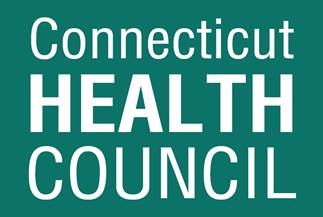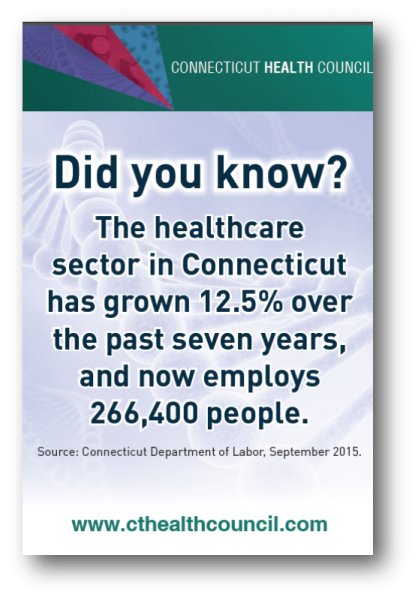CT Economic Development Leadership Has Been Changing, With More About to Arrive
/Incoming Gov. Ned Lamont’s transition team looked at the state’s economy and business climate and declared, "Given the current fiscal pressures and environment in Connecticut, an economic development and pro-growth platform must have the laser-like focus of the new administration.” If the new administration follows through on that pointed recommendation, it will do so with a relatively new line-up in the field as well as in the administration, where, in addition to a businessman Governor, expectations are that Connecticut will have it's first Secretary of Commerce, along with a restructured economic development framework and approach.
One needs only look as far as four of the state’s leading business organizations to see that change is already underway around the state, and Connecticut’s economic development line-up is in the midst of a major makeover.
The Greater New Haven Chamber of Commerce, the MetroHartford Alliance and the Danbury Chamber of Commerce all have leaders at the helm who came on board with the past year. And less than two months ago, the Bridgeport Regional Business Council saw a new leader take the reins.
Dan Onofrio began as president and CEO of the Bridgeport Regional Business Council (BRBC) in November after a decade as executive vice president of operations and general manager of business systems operations at Environmental Data Resources. He is also a franchise partner in three Rita’s Ice franchises in Connecticut and was the co-founder of the Greater Valley Chamber of Commerce’s Young Emerging Professionals business networking group, the Fairfield County Business Journal reported.
“The greater Bridgeport region has so much opportunity and I see so much potential to be part of the good things that are ahead of us,” Onofrio said in a recent interview. “There is a perception that it is difficult to do business in Connecticut, so I think that we — not just as a region but as a state — need to change the perception of what Connecticut is and what we have to offer.”
Among his top priorities: “to get engaged with the small-business community as well as the large corporations, and to work with the universities to see how we can create that ecosystem to create a sustainable downtown.” Widening to a statewide lens, he observed “If policy in Hartford can change, we will see a domino effect of activity in Connecticut that will boost the economy. But it’s not a silver bullet — there are a multitude of things that need to happen.”
Garrett Sheehan has served as president of the Greater New Haven Chamber of Commerce (GNHCC) since March. Before taking the post at the chamber, Sheehan worked as a broadcast journalist, in economic development and at United Illuminating (UI). He grew up in Middlefield before career stops elsewhere in the country, and service in the U.S. military. The Chamber of Commerce advocates for business interests in New Haven and 15 suburbs, from Madison to Wallingford to Orange to Milford. He also serves as 1st Vice President of the Connecticut Economic Development Association.
Sheehan said recently, “from an economic development standpoint I think [the region] has a really strong selling point: location, quality of workforce, institutions of higher education here, and business space we have here… I’m from Connecticut I want to be a part of the solutions to make Connecticut a great place to be.”
The MetroHartford Alliance’s new leader, David Griggs, also took the helm in March, moving to Connecticut from a similar economic development post in Minneapolis-St.Paul.
“Hartford is a fabulous region that has been flying under the radar,” Griggs said on his arrival in Hartford. “The world needs to know what a great place Hartford is, like the world knows what a great place Minneapolis is… Our focus needs to be less convention and visitors bureau-type messaging about Hartford being a great place to live, work, or play. It needs to be more of a focused message to very specific industries about why they need to be in Hartford if they want to prosper in the U.S. marketplace in their industry.”
In November, Griggs unveiled plans for a changing focus, including an internal restructuring with new leadership staff (to include a research director), strengthening recruiting strategies and an unprecedented level of travel to promote Greater Hartford across the country, the Hartford Business Journal reported. The Alliance will also rekindle its previous chamber function, bringing back the old Hartford Chamber of Commerce name that hasn’t been used in nearly two decades.
Peter “P.J.” Prunty, who served as director of CityCenter Danbury for the last two and a half years, was appointed as president and CEO of the 10-town Greater Danbury Chamber of Commerce last March. Prunty was born and raised in Danbury.



 In addition, the marketing campaign also highlights that thee of the top 10 fastest growing companies headquartered in Connecticut in 2014 were healthcare related companies, and that Connecticut’s healthcare sector has the fifth highest number of sole proprietorships of any sector in the state, with the seventh highest revenues. Connecticut’s “unique base of health sector assets” include health insurance companies, hospitals, medical schools, research capacity, and specialty practices, according to the organization’s website.
In addition, the marketing campaign also highlights that thee of the top 10 fastest growing companies headquartered in Connecticut in 2014 were healthcare related companies, and that Connecticut’s healthcare sector has the fifth highest number of sole proprietorships of any sector in the state, with the seventh highest revenues. Connecticut’s “unique base of health sector assets” include health insurance companies, hospitals, medical schools, research capacity, and specialty practices, according to the organization’s website. 
 The Council's primary activity is to host programs focused on health sector topics that feature speakers of regional, national and international renown, the website points out. The Council also provides “a forum for a robust network of experts, professionals and other parties interested in promoting Connecticut as a center of health excellence and the health sector as a primary driver of economic and employment growth in our State.”
The Council's primary activity is to host programs focused on health sector topics that feature speakers of regional, national and international renown, the website points out. The Council also provides “a forum for a robust network of experts, professionals and other parties interested in promoting Connecticut as a center of health excellence and the health sector as a primary driver of economic and employment growth in our State.”
 Since entering the Connecticut market in the summer of 2014, the company has been aggressively growing its customer base in a competitive market while working diligently to grow and expand its network of doctors. Harvard Pilgrim Health Care announced recently that its Connecticut membership has grown to more than 24,000, exceeding expectations for 2015. It now serves more than 800 Connecticut businesses. Twenty-nine of the state’s 30 hospitals are now in-network.
Since entering the Connecticut market in the summer of 2014, the company has been aggressively growing its customer base in a competitive market while working diligently to grow and expand its network of doctors. Harvard Pilgrim Health Care announced recently that its Connecticut membership has grown to more than 24,000, exceeding expectations for 2015. It now serves more than 800 Connecticut businesses. Twenty-nine of the state’s 30 hospitals are now in-network. With more than 500 business leaders in attendance at an annual Economic Summit & Outlook last week, brought together by the Connecticut Business and Industry Association and MetroHartford Alliance, Schmitt spent some time touting a new model launched in the state of New Hampshire that he believes may be a glimpse into the direction the industry is moving. Harvard Pilgrim Health Care’s footprint in New England now covers “where 90 percent of New Englanders live,” in Massachusetts, Connecticut, Maine and New Hampshire.
With more than 500 business leaders in attendance at an annual Economic Summit & Outlook last week, brought together by the Connecticut Business and Industry Association and MetroHartford Alliance, Schmitt spent some time touting a new model launched in the state of New Hampshire that he believes may be a glimpse into the direction the industry is moving. Harvard Pilgrim Health Care’s footprint in New England now covers “where 90 percent of New Englanders live,” in Massachusetts, Connecticut, Maine and New Hampshire. 
 Launched
Launched
 ative way the Hartford Foundation works and the permanence and stability that the 89-year old organization provides to the community.
ative way the Hartford Foundation works and the permanence and stability that the 89-year old organization provides to the community.



























